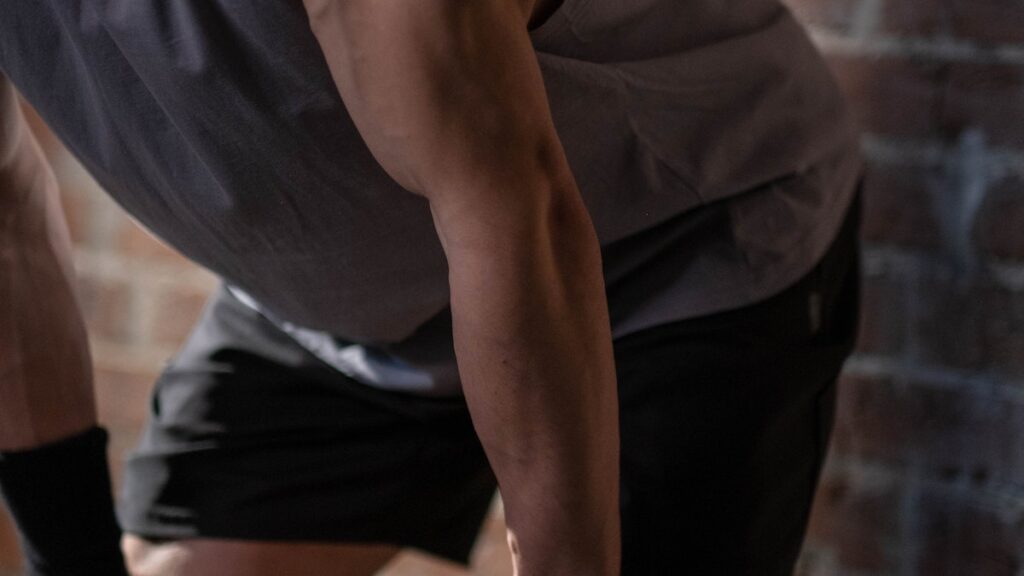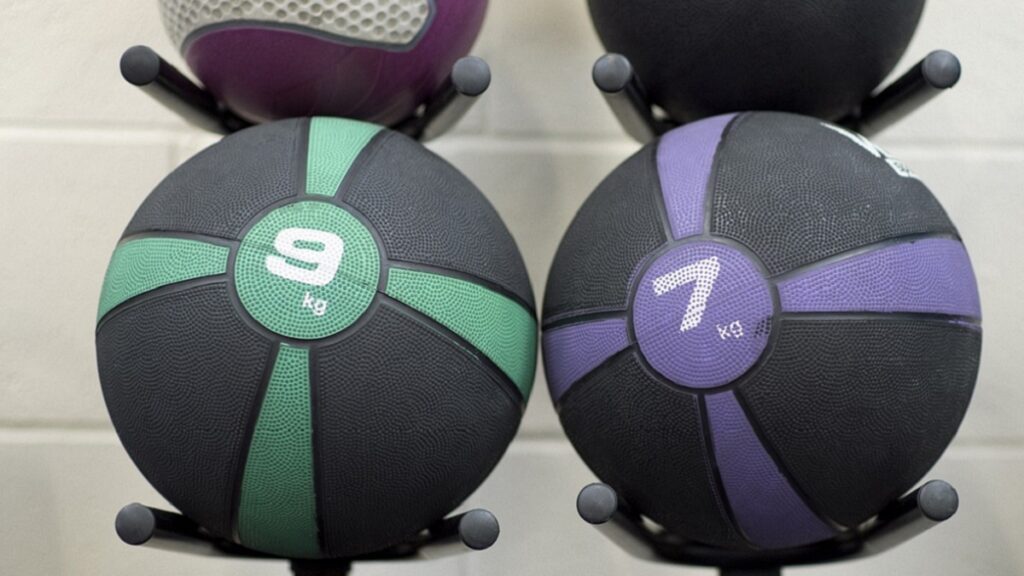The deltoid muscle is an essential part of your shoulders, comprising the anterior, lateral, and posterior muscles. Therefore, it’s necessary to do deltoid muscle workouts to ensure fitness. The muscle is responsible for sculpting your arms, preventing injuries, protecting shoulder joints, and enhancing posture. So, what are the available deltoid muscle exercises?
There are various deltoid exercises, including the dumbbell shoulder press, front raise, neutral grip shoulder press, neutral grip front raise, lateral raise, and more. The workouts enhance your shoulders’ strength and mobility, build up deltoids, and improve your physique and upper body.
This article lists shoulder workouts to help you work your delts. It gives an in-depth review of each, allowing you to make quick and informed decisions. Let’s dive in.
Deltoid Muscle Workouts: 10 Options You Should Consider
Below are the ideal deltoid muscle workouts you should consider adding to your program:
- Single arm cross body front raise
- Cable Machine High Pull With Ropes
- Seated EZ bar underhand press
- Dumbbell shoulder press
- Neutral grip shoulder press
- Neutral grip front raise
- Angled shoulder press
- Single-Arm Bent-Over Row
- Standing Bent-Over Lateral Raise
- Pushups
Keep reading as we dig deeper into each of the above deltoid workouts.
1. Single Arm Cross Body Front Raise
The workout mainly targets the anterior delts and pectoral muscles. It improves the size and strength of your shoulders, enhancing the balance between them.
Below are the workout’s instructions:
- Position your feet hip-distance while standing.
- Hold dumbbells in your hands with palms away from your body.
- Raise your right arm and across your body towards the left side, with the arms straight and engaging the core.
- Slowly return the arm to the starting point.
- Do the same with the left arm.
- Repeat the performance for 10 reps on each side, alternatively.
Tips:
- Avoid rocking or swaying during the exercise. Instead, maintain a strong and stationary torso. If it isn’t possible, use a lighter weight.
- Avoid using momentum when raising the weight, as it reduces the exercise’s effectiveness.
- Don’t lift hefty weights as they can strain the joints, leading to injury.
- Keep your wrist in a neutral position. If not possible, the weight is excess.
- Maintain a straight back and a braised abdomen.
Benefits:
- Strengthens shoulder muscles (deltoids) and chest muscles.
- Manages the in-between shoulder imbalances.
- Challenges the core muscles.
Risks:
- If not performed correctly, it can injure the spine or lower back, elbows, wrists, and shoulders.
- Improper resistance can cause injuries.
- It’s a bit complex for beginners.
2. Cable Machine High Pull With Ropes
Although the exercise requires gym equipment, it’s an ideal way to diversify your workout program. The change can target your deltoid in different ways, which may be more effective, resulting in strengthened muscles. It’s one of the deltoid muscle workouts that focus primarily on the lateral and rear delts, rhomboids, and trapezius.
Below are the workout’s instructions:
- Stand facing the cable machine with a hip-width distance between your feet.
- Set the cable attachment to chest height and fix the rope handle.
- Step back as far as your hands can reach the ropes and maintain the hip-width feet distance.
- Pull the ropes towards you and maintain your elbows up high to emphasize the deltoids.
- Return your elbows back out to the starting point slowly and controllably.
- Repeat for your target reps.
Tips:
- Bend your elbows 45-90 degrees from your sides when pulling the rope apart and away from your chest.
- Lower your elbows to your comfort level if you feel pain or stiffness with the 90-degree position (parallel to shoulders).
- Keep your head up and look straight ahead.
- Avoid arching your back by keeping your torso tall.
- You can anchor a resistance band on your front side when performing the workout.
Benefits:
- It’s ideal for beginners.
- Strengthens the lateral and rear delts, among other muscles.
- Prevents or reduces back pain.
Risks:
- Pulling the bar behind your neck can cause severe shoulder and neck problems if you pull the bar down behind your neck (wrong form).
3. Seated Ez Bar Underhand Press
Anterior shoulder muscles are the primary focus of this exercise. Your elbows extend in front of the body on an underhand grip, emphasizing more front-deltoid fibers. Consequently, you maximize your deltoid muscle growth.
Below are the workout’s instructions:
- Load your EZ bar with your ideal weight for the exercise.
- Grasp the bar in an underhand grip and slowly raise it past your head.
- Lower the weight behind your head, keeping your elbows close to your body and squeezing the triceps, and hold a bit.
- Return the bar to the starting place.
- Repeat for your desired reps and sets.
Tips:
- Keep your elbows on your sides throughout the exercise.
Benefits:
- Enhanced muscle isolation and activation: Muscle stimulation and growth are significant benefits of the EZ bar underhand press.
- Improved balance between the two shoulders: EZ bars are lighter and shorter than regular bars. The bar is 5ft long and, thus, brings the weight plates’ gravity center.
- Suitability for the experienced lot.
- Less joint pain: The workout’s angled grip removes the stress on the shoulder, forearm, elbow, and wrist with the straight bar option by avoiding the latter’s external rotation.
Risks:
- It’s less mechanically secure and can increase the risk of dropping.
4. Dumbbell Shoulder Press
The workout is one of the most straightforward deltoid muscle workouts, with deltoids being its primary focus. Hence, you’ll likely have it early as you climb your fitness ladder. Its performance causes the deltoid’s head to contract to raise your arm in the first half of the workout.
Below are the workout’s instructions:
- Get into position with your feet hip-distance apart.
- Grab dumbbells, one in each hand.
- Lift the weights to shoulder height (starting position), the arms parallel to each other, and palms facing away from your body.
- Push the dumbbells overhead, engaging the core to maintain stability in each rep.
- Slowly lower the weights to the starting position.
- Repeat for at least ten reps.
Tips:
- Avoid excessive leaning back to prevent chest muscle recruitment and maximize deltoid recruitment.
- Maintain your performance setup so you can focus on improving your skills.
- Move slowly and control the eccentric to allow more time under tension.
Benefits:
- Suits everyone, including beginners.
- Bigger shoulders due to muscle stimulation.
- Offers versatility and comfort during performance.
- Addresses imbalances by bringing stabilizers front and center.
- Unparalleled convenience: Fits in a busy gym, easy-to-store at home, and highly portable.
Risks:
- It can cause injury if you make unnatural movements during the exercise.
5. Neutral Grip Shoulder Press
The workout only slightly differs from the regular shoulder press: You hold the dumbbells with a ‘neutral grip,’ and your palms face each other at the shoulder height starting position. The exercise among the deltoid muscle workouts that deal with the anterior delts, triceps, and pectorals.
Below are the workout’s instructions:
- Take your workout position with your feet hip-distance apart.
- Grab a pair of dumbbells and one in each hand.
- Raise the weights to ear level (elbows bent and palms moving towards each other but facing the head).
- Stretch your arms above your head until the elbows are completely locked.
- Slowly lower your arms to the starting position.
- Repeat for your desired reps.
Tips:
- Lying back and going into a press immediately produces momentum to lift the dumbbells to the starting point.
- Avoid excessively lowering your elbows to prevent overtaxing your shoulders. Stop as soon as the weight slightly touches the chest.
- Keep off your shoulders from flaring in the course of the exercise.
Benefits:
- By allowing ‘training around shoulder pain,’ the exercise is ideal when experiencing shoulder pain or recovering from surgery.
- Puts less stress on the vulnerable parts of your shoulders.
- It’s easy to perform and, thus, accommodates trainees of all levels.
Risks:
- The neutral grip places your shoulder joints nearly horizontal, reducing the shoulders’ stretch.
6. Neutral Grip Front Raise
The neutral grip front raise is among the best deltoid muscle workouts to isolate the anterior deltoid head, as the shoulders are its primary focus.
Below are the workout’s instructions:
- Stand in a feet shoulder-width position, holding your dumbbells in a neutral grip, one in each hand, with palms facing in.
- Stretch your arms forward with the palms facing each other and raise the dumbbell to shoulder height until they’re parallel to the ground.
- Let the shoulders initiate the move instead of leaning back to build momentum by standing straight and keeping your glutes and core contracted.
- Slowly return the dumbbells to the starting position.
- Repeat for your target reps.
Tips:
- Avoid swinging your arms up. Instead, control your upward and downward movements.
- Keep your glutes and core contracted throughout the exercise.
- Maintain a straight-back posture.
Benefits:
- Enhances strength for the anterior deltoids and overall upper body.
- Builds more muscle mass and strength due to their isolation effectiveness.
- Improves body physique.
Risks:
- It exposes you to injury risk when you use too heavy weights.
7. Angled Shoulder Press
The primary target of this shoulder press variation is the anterior deltoids. However, it also works the other deltoids, trapezius, triceps, and pecs. Its main form difference from the other deltoid muscle workouts is that you place the dumbbells at an angle.
Below are the workout’s instructions:
- Get into your workout position with your feet hip-distance apart.
- Hold your two dumbbells, one in each hand.
- Raise your dumbbells to shoulder height.
- Rotate the weights outwards (45 degrees) with elbows tucked into your sides.
- Stretch your arms above your head until the elbows are straight.
- Slowly lower the weights to the starting point.
- Repeat to meet your target reps.
Tips:
- Always press your dumbbells with your elbows at the 45 degrees angle and not 90 degrees.
- Keep your arms away from your ears, pressed down and backward at the start.
- Don’t shrug your shoulder up to your ears when pressing up.
- Keep your back straight when exercising.
- Avoid slamming the dumbbells at the top.
Benefits:
- It works on various muscle groups, including deltoids, trapezius, triceps, and pecs.
Risks:
- Loss of balance if you lift the dumbbells excessively high or too fast.
8. Single-Arm Bent-Over Row
Working your shoulders and back is sorted with this bent-over-row variation. It’s one of the deltoid muscle workouts that enhances posterior strength and targets the rear delts, biceps, back, and transverse abdominals.
Below are the workout’s instructions:
- Set your left hand and knee on a bench, keeping your left elbow straight.
- Stretch your right leg slightly behind and keep it on the floor for support.
- Maintain a flat back and a neutral spine.
- Hold a dumbbell (medium-heavy)in your right hand, stretching your arm towards the ground.
- Bend your right elbow as you lift the weight so that your upper arm and chest are in line.
- Squeeze your shoulder blades at the top of the move.
- Return to the starting point controllably.
- Repeat for your target reps and switch to the left side.
Tip:
- Maintain a stable trunk, and don’t rotate it during the workout. If not possible, reduce the weight or take a break.
- Start with light weights, and only increase when you can handle 12 repetitions.
- Seek proper guidance to ensure you’re using the correct technique.
Benefits:
- Firmer and more powerful deltoids.
- Improved balance, agility, and coordination.
- Enhanced strength and agility prevent injuries and falling.
- Improved body composition, minimizing the risk of many related diseases.
- Strength training prevents bone loss.
Risks:
- The exercise isn’t risky, but like its counterparts, poor form can result in injury.
9. Standing Bent-Over Lateral Raise
The lateral raise variation is among the deltoid muscle workouts that work the posterior and lateral deltoids, middle trapezius, and rhomboids. Starting with a lighter weight for beginners is a safe and effective option.
Below are the workout’s instructions:
- Hold dumbbells in your hands with your palms facing each other.
- Take feet shoulder-width apart, standing posture with your knees slightly bent: Bend forward at the hips and keep the back straight.
- Keep your elbows straight and the dumbbells together below the chest.
- Raise your arms and stretch them until they’re parallel to the floor.
- Squeeze your shoulder blades at the movement’s top.
- Slowly and controllably, return the weights to the starting point.
- Repeat for your target reps.
Tip:
- Keep your trunk and head in line throughout the workout.
Benefits:
- Enhances the growth of posterior deltoids.
- Improved shoulder stability due to increased pulling and pushing performance.
- Increased balance due to strengthened shoulder stabilizing muscles (pectorals and anterior deltoids).
Risks:
- Rear deltoids can be easily damaged if you use hefty weights due to their small size and weak nature compared to the adjacent back muscles.
10. Pushups
The deltoid muscle workouts target multiple muscles (triceps, pectoral muscles, and shoulders) and aim at strength building. Also, they offer health benefits like better posture and a strong core. Additionally, you can adjust these exercises for more accessibility and performance ease.
Below are the workout’s instructions:
- Get into a tabletop position (on your hands and feet) with your arms slightly outside the shoulder width.
- Extend your feet backward to a point where you touch the floor with your toes and your feet hip-width apart.
- Draw your belly bottom up towards the spine to engage your core. A tight core aligns your head and toe.
- Bend your elbows to 90 degrees and move your body towards the floor.
- Return to the starting position by pressing your hands.
- Repeat for your desired reps.
Tips:
- Maintain a tight core to prevent back arching and hips sagging.
- Keep your head, neck, and shoulders straight and aligned with the spine.
- Maintain your arms’ position under your shoulders.
- Keep inhaling downwards and exhaling as you push up.
Benefit:
- Target multiple muscle groups, with deltoids being among the primary target.
- Strengthening your back, abs, and shoulders gives you a good posture.
- Increases the strength of the entire upper body.
- Strengthens your core.
Risks:
- Push-ups can cause wrist and lower back pain and elbow injury.
FAQ
Does Shoulder Press Damage Shoulders?
No, a shoulder press doesn’t damage shoulders if done correctly. Always ensure you lower the weight in front of your body and not behind your neck. Otherwise, it’s among the deltoid muscle workouts that can lead to shoulder pain and injury.
What Is The Most Common Injury From Overhead Press?
The most common injury from the overhead press is rotator cuff injury. It results from repetitive movements like overhead lifting, causing the shoulder blade’s top to pinch at the rotator cuff muscles. Also, repetitive movement can cause tendon overload leading to tendonitis development.
How Many Push-Ups A Day Is Harmful?
No number of push-ups is harmful in a day. Some trainers do over 300 push-ups daily. Even so, when done correctly, 50-100 exercises are enough for an average person to maintain a healthy upper body. You can do 20 per day as a starter and increase over time.
Wrap Up
Deltoids are essential shoulder muscles useful in your hand movements and shoulder stabilization. Hence, ensuring their maximum strength and overall fitness is necessary for proper shoulder mobility.
Luckily, many muscle shoulder exercises are available (with and without equipment) to help you achieve your shoulder muscles’ wellness goal. Our list of 10 deltoid muscle workouts comprises top-notch exercises that can work your delts and strengthen your upper body. Consider including some in your gym program and try something new!
However, you should consult a health expert if you’re a beginner before trying one. Also, work with a qualified trainer if your workout requires a machine.



